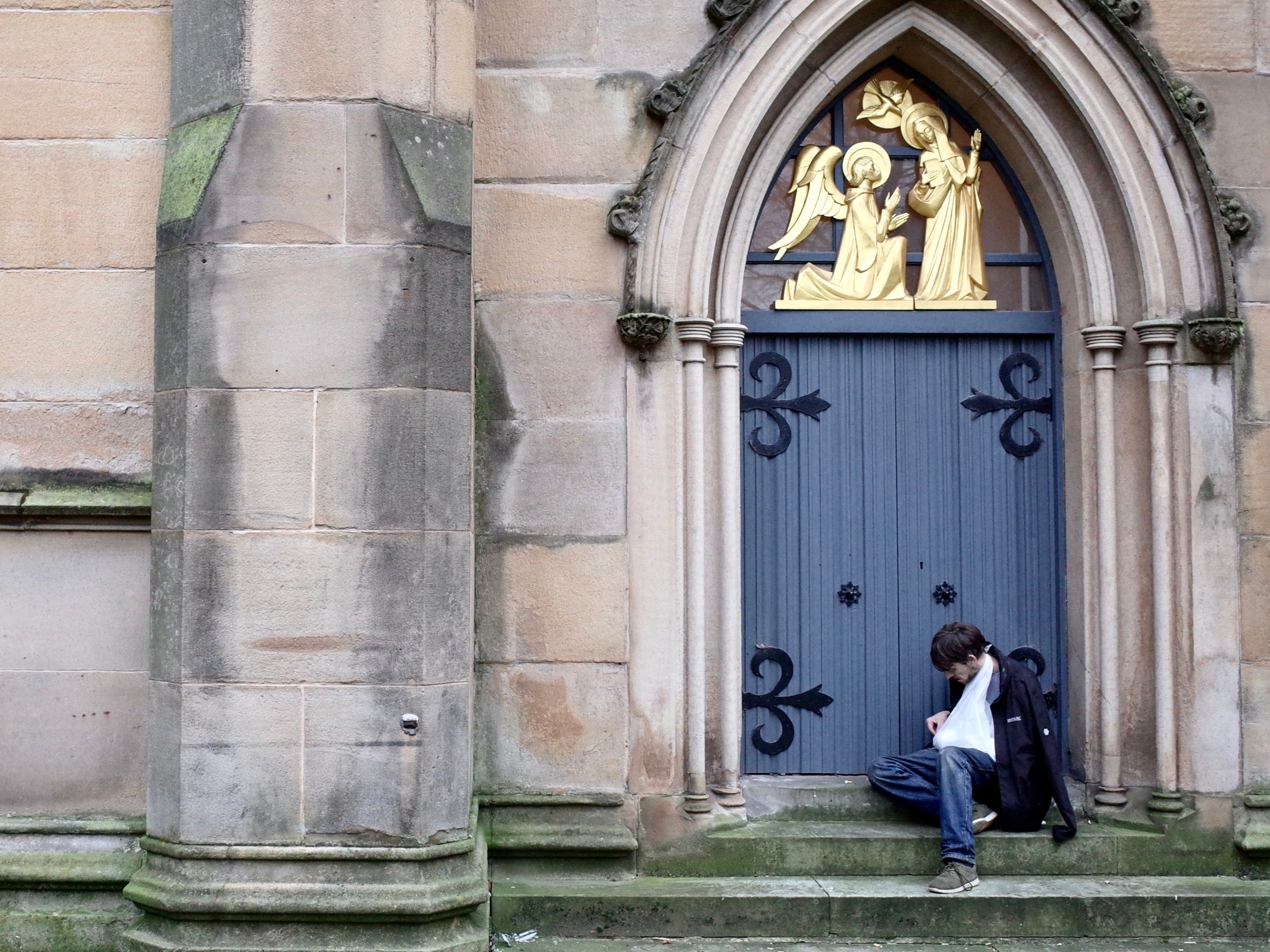Britain Before Brexit: a portrait of northwest England and its people
The Independent’s photographer Richard Morgan is examining his own country in the midst of Brexit’s chaos, scrutinising the contrasts of contemporary Britain and the ambivalence of modern Britishness. This week: northwest England

Britain is divided, by 12 regions, a statistical arrangement designed to help governments see the life of the population in graphs, charts, and tables. I’m looking at Britain through these regions too, but not statistically, not through numbers that ignore the brilliant details of everyday life, but through the lens of my camera, on the ground, up close.
Carlisle is a border city and I arrive eager to find evidence of its proximity to a dividing line: I walk along English Street and wonder if local people feel English or Scottish or British; I pass through a shopping centre in search of the architectural, ethnic and cultural mixing one finds in Lviv and Szczecin and other European border towns; I stand in front of the castle, imagining long years of identity blurring and arguments over who’s us and who’s them.
Later I ask a man in a bar what it feels like to have been brought up on a border, on the cusp of somewhere else, on the edge. His answer shatters my illusion completely. Rather than a place of exchange, he tells me, Carlisle is an isolated city, 20 miles from anywhere, alone in the countryside, an island on an island, and because of that, he emphasises with pride, it’s remained preserved in its white Englishness.
I take the train south, covering the 20 miles separating Carlisle from Preston.
Britain Before Brexit: Northwest England
Show all 12I’m struck immediately by the number of people begging and sleeping on the high street. I stop and talk to a missionary from Idaho who asks me why we are here, what’s our purpose and who we are, really. She’s been spreading God’s word in Wigan, the Isle of Man and now Preston, and as I look into her beautiful muddy brown eyes I see the naivety of a young woman from America who’s dedicating her life to the salvation of the British people.
I wish her luck and walk to the bus station because I know it’s a grade II-listed building. Will Self discovered this on his Great British Bus Journey, and felt the shame of not knowing “like a urinary tract infection of the soul”.
And amid the geometrical pleasantness and neat lines of brutalism I think of the missionary from Idaho and wonder how many souls she’s saved today, if any, and whether or not the British soul can be saved at all right now, or if it’s been irreversibly corrupted, infected, like Will Self’s, by ignorance of its own back yard.
In Blackburn I follow a trail of street art. It’s a treasure hunt of hidden graffitis in narrow alleys, a secret pathway by great murals on huge walls, an unbeaten track through spray-painted patterns on bridges and stairways.
These are the works of the Blackburn Open Walls project, an artist led initiative that since 2016 has been trying to “#MakeBlackburnBeautiful”. The result is a place where the imaginations of artists – foreign and British, global and local – have been tattooed onto the skin of the city; a place where vision runs amok in all its brilliant colour and vividness.
I stand transfixed in front of a Hayley Welsh piece, in which a pair of floating, expectant explorers sit trapped between the hand-written letters of their past and a periscopic view of their future. “This moment is your LIFE”, they are reminded.
I don’t know if the project makes Blackburn beautiful, but it does make it unusual and striking and stimulating. It makes Blackburn different, a rare place in Britain where visual art and not visual advertising takes centre stage in the effort to affect people’s minds.
I arrive in Liverpool at night in the rain. I go immediately to the pub for food and drink. I sit alone by the window. To my right is a Liverpudlian telling two Poles how important it is to learn English. To my left, outside, with his back to the window, is a man begging for money. I sit in-between and read Joseph Heller’s Catch 22, thinking about the absurdity of the modern world.
The next day I visit the Slavery Museum at the docks and skim read the sad story of the largest forced movement of people in the history of the world, in which Britain played the leading role.
At night I board a Ferry at Birkenhead, set for Belfast. I join the cabin-less in the bar, some already asleep on chairs and benches, not woken by the low volume of the TV on which the opening sequence of Schindler’s List begins.
I watch the entire film, then step out on deck to look at the black sea, and think back to an exhibition about the ocean liner Lusitania that I’d passed earlier in the day. In 1915 it had crossed these very same waves, before being torpedoed by a German U-boat and sinking in 18 minutes. More than 1,000 people died.
I look at faint lights in the distance and wonder why the sinking of the Lusitania is not a well-known tragedy in this country, why its story seems to have gone down with the ship itself, remaining a footnote to the sinking of the Titanic.
For more of Richard Morgan’s work you can visit his website here
Subscribe to Independent Premium to bookmark this article
Want to bookmark your favourite articles and stories to read or reference later? Start your Independent Premium subscription today.

Join our commenting forum
Join thought-provoking conversations, follow other Independent readers and see their replies